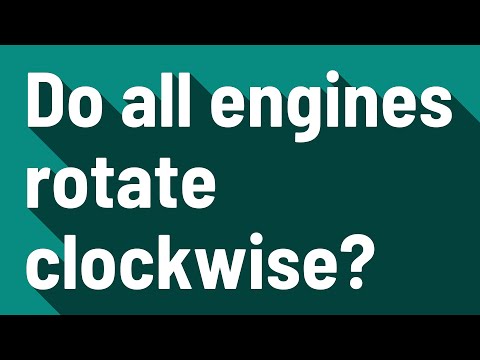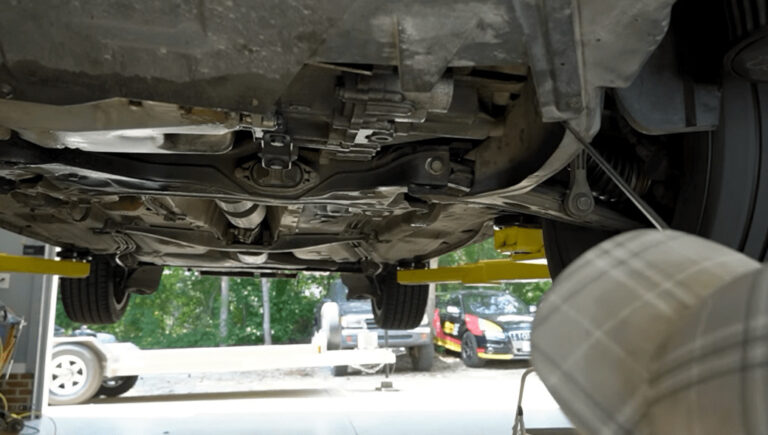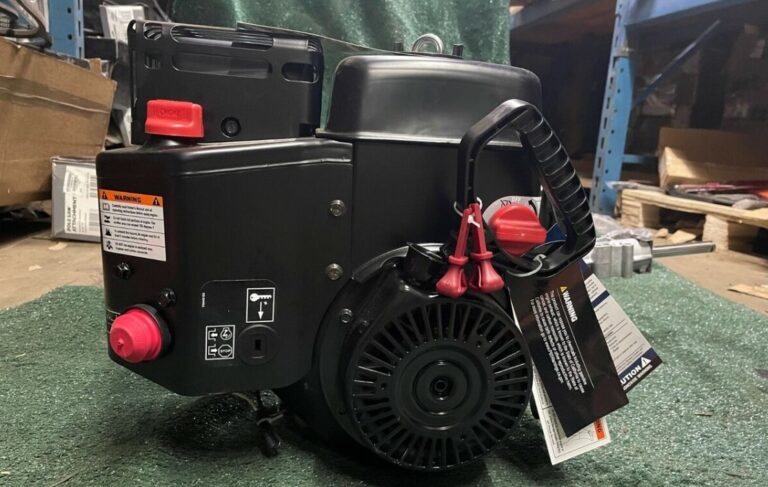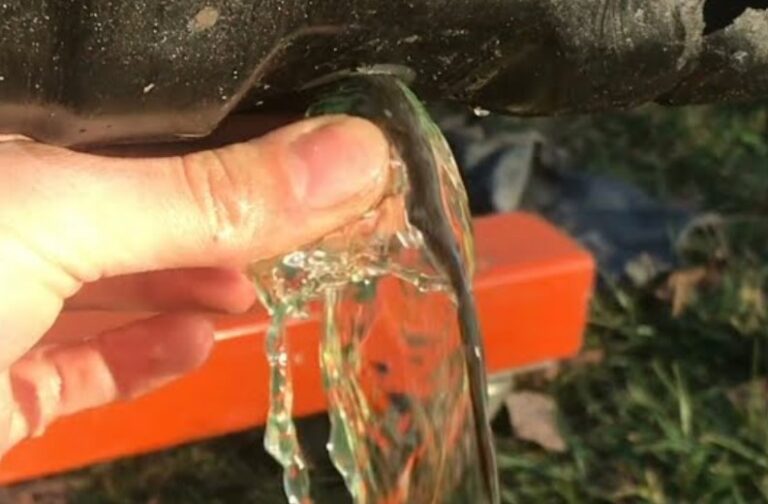How To Determine Engine Rotation Direction? 10 Easy Steps
In this article, we’ll explain How To Determine Engine Rotation Direction? Understanding the rotation direction of an engine is crucial for various automotive and mechanical applications. This guide delves into the methodologies and techniques to accurately determine the engine rotation direction, ensuring optimal performance and compatibility in mechanical systems.
Key Takeaways
- Identifying Rotation Direction: Methods include visual inspection, starter motor observation, and manufacturer documentation.
- Importance: Correct rotation direction is vital for engine performance and component compatibility.
- Tools Required: Basic tools like a wrench and observation skills are often sufficient.
- Troubleshooting Tips: Common issues and solutions when determining engine rotation direction.
- Expert Insights: Professional advice for accurate assessment.
How To Determine Engine Rotation Direction?
Determining the engine rotation direction is a critical step in various mechanical and automotive tasks. Here’s a detailed guide on how to ascertain this:
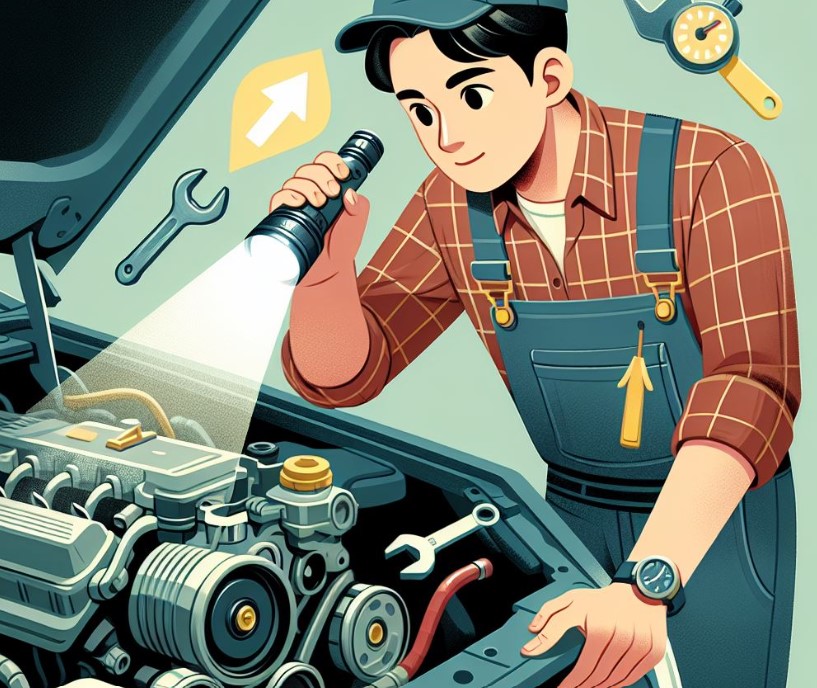
1. Visual Inspection
- Locate Key Components: Find the crankshaft pulley, fan, or belts at the front of the engine.
- Observe During Operation: Safely start the engine and observe the direction these components move. This is often the most straightforward way to determine the rotation direction.
- Look for Manufacturer’s Marks: Some engines have rotation directions indicated by arrows or marks near the crankshaft pulley or timing belt.
2. Manual Rotation Method
- Tools Required: You’ll need a wrench or socket that fits the crankshaft pulley bolt.
- Engine Off and Safe: Ensure the engine is off and the vehicle is in a safe, stationary position.
- Rotate the Crankshaft: Attach the wrench to the crankshaft pulley bolt and turn it. The direction in which it rotates easier is usually the engine’s natural rotation direction.
3. Starter Motor Observation
- Safety First: Disconnect the ignition system or spark plug wires to prevent the engine from starting.
- Engage the Starter: Have someone turn the ignition key to engage the starter motor while you observe.
- Note the Rotation: The direction the starter motor turns the engine (usually visible on the crankshaft pulley or fan) is the rotation direction.
4. Consulting Manufacturer’s Documentation
- Owner’s Manual or Service Manual: These often contain information about the engine rotation direction.
- Technical Specifications: Look in the technical specifications section for rotation direction details.
5. Using Diagnostic Tools
- Professional Equipment: In some cases, especially for complex engines, diagnostic tools may be needed to determine the rotation direction.
- Consult a Mechanic: If you have access to a professional mechanic’s expertise, they can use diagnostic tools to accurately determine the direction.
6. Observing Ancillary Components
- Alternator and Water Pump: The direction of rotation of ancillary components like the alternator and water pump can indicate the engine’s rotation direction.
- Belt Configuration: The routing of the serpentine or drive belts can also give clues about the rotation direction.
7. Understanding Engine Design
- Cylinder Arrangement: In some engine designs, especially older or custom engines, the cylinder arrangement can give you hints about the rotation direction.
- Engine Configuration: V-engine, inline, or flat configurations might have specific rotation characteristics.
8. Consulting Online Forums or Databases
- Model-Specific Forums: Online communities often have vast amounts of information about specific engine models.
- Database Searches: Looking up the engine model in online databases can yield valuable information, including rotation direction.
9. Observing Distributor Rotation (if applicable)
- Older Engines with Distributors: The rotation of the distributor rotor (clockwise or counterclockwise) often matches the engine rotation direction.
- Note: This method applies only to engines equipped with a distributor.
10. Checking with the Manufacturer or Dealer
- Direct Inquiry: If all else fails, contacting the manufacturer or an authorized dealer can provide the most accurate information.
Precautions
- Safety: Always prioritize safety when working around engines, especially when they are running.
- Accuracy: Double-check your findings, especially if the engine has been modified or is an unusual model.
- Expert Consultation: If you’re uncertain, consult with a professional mechanic to avoid any mistakes.
Each engine type and model might have specific nuances, so it’s essential to consider these steps as general guidelines that should be adapted to your specific situation.
Visual Inspection Methods
Observing Engine Components
The first and most straightforward method to determine engine rotation direction is through visual inspection. This involves examining key engine components such as the crankshaft, fan, or pulleys. The direction these components move when the engine is running indicates the rotation direction.
Understanding Manufacturer Marks
Manufacturers often mark the direction of rotation on the engine itself. These marks can be found on the crankshaft pulley or near the timing belt. Checking for these marks is a quick and reliable method.
Starter Motor Observation
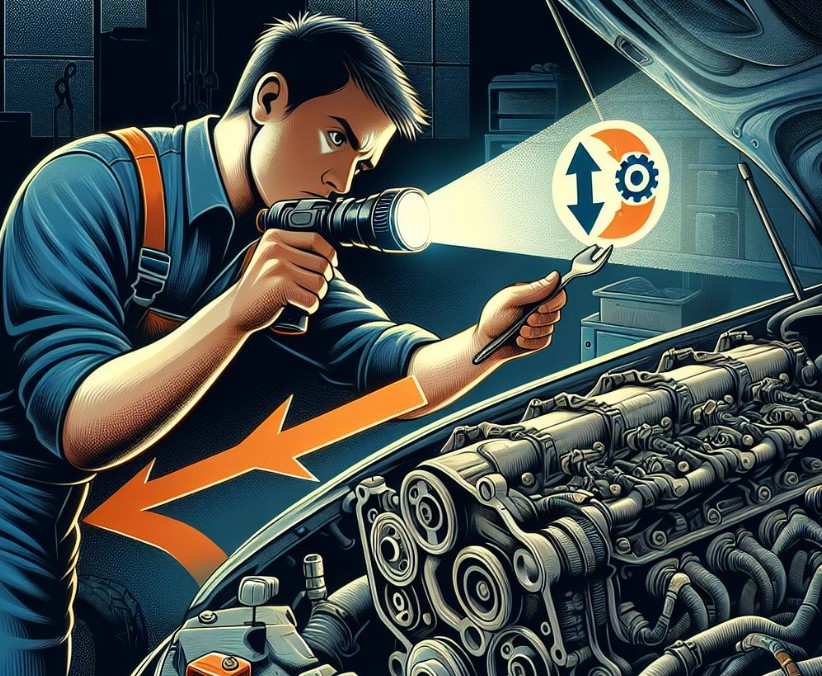
Analyzing Starter Motor Mechanics
The starter motor plays a crucial role in setting the initial rotation of an engine. Observing the movement of the starter motor can give clear indications of the engine’s rotational direction. When the starter motor engages, it either rotates clockwise or counterclockwise, thereby setting the engine in motion in the corresponding direction.
Practical Tips for Observation
While observing the starter motor, ensure that all safety precautions are in place. Disconnecting the ignition system while cranking the engine can help focus on the movement without starting the engine.
Engine Design and Rotation
Impact of Engine Design
Engine design significantly influences its rotation direction. Factors like the arrangement of cylinders and the configuration of the drivetrain play a critical role. For instance, most conventional engines in the Northern Hemisphere are designed to rotate clockwise when viewed from the front.
Differences in Rotation Direction
Different engine types, such as marine or aviation engines, may have varying rotation directions. This is often due to specific design requirements or functional needs in their respective applications.
Understanding Manufacturer Documentation
Importance of Manufacturer’s Manual
The manufacturer’s manual or technical documentation is a reliable source for determining engine rotation direction. These documents often contain detailed diagrams and specifications regarding the engine’s operational aspects, including rotation direction.
Where to Find Relevant Information
The engine rotation direction is typically listed in the technical specifications section or in the engine operation guidelines of the manual.
Troubleshooting Tips
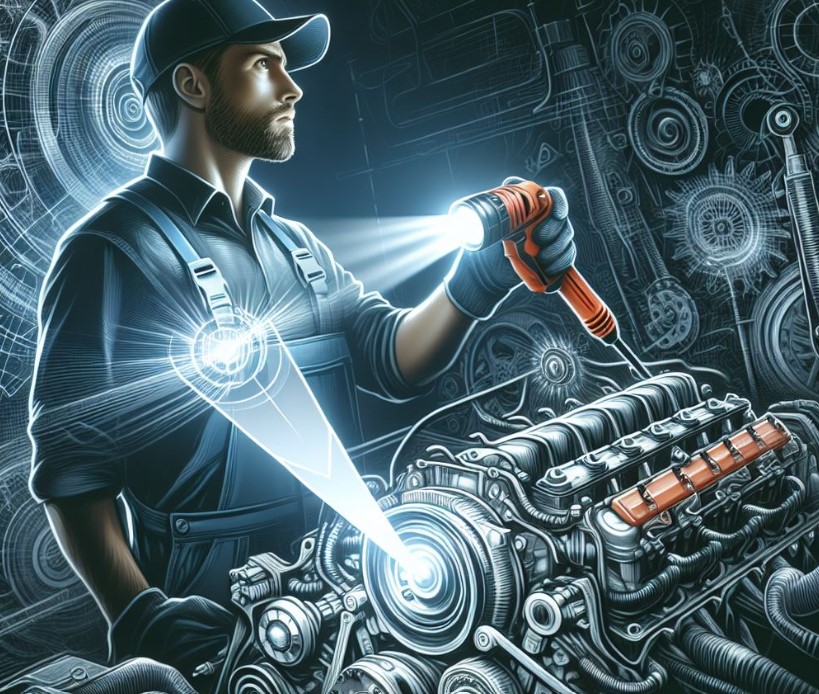
Common Challenges
One common challenge in determining engine rotation direction is dealing with engines that lack clear visual indicators or have been modified from their original design.
Solutions and Best Practices
In such cases, consulting with a professional mechanic or referring to online forums specific to the engine model can provide valuable insights.
Expert Insights
Professional Mechanics’ Advice
Experienced mechanics often suggest checking multiple factors, such as the direction of the distributor rotor movement and the configuration of the timing belt or chain, to accurately determine engine rotation direction.
Advanced Techniques
For more complex engines, using diagnostic tools or software can provide a more precise determination of the rotation direction.
How Do You Tell If A Motor Is Clockwise Or Counterclockwise?
Determining whether a motor rotates clockwise or counterclockwise is crucial for ensuring proper operation in mechanical and electrical systems. The standard method to identify the rotation direction is by observing the motor’s shaft from the end where the drive is connected.
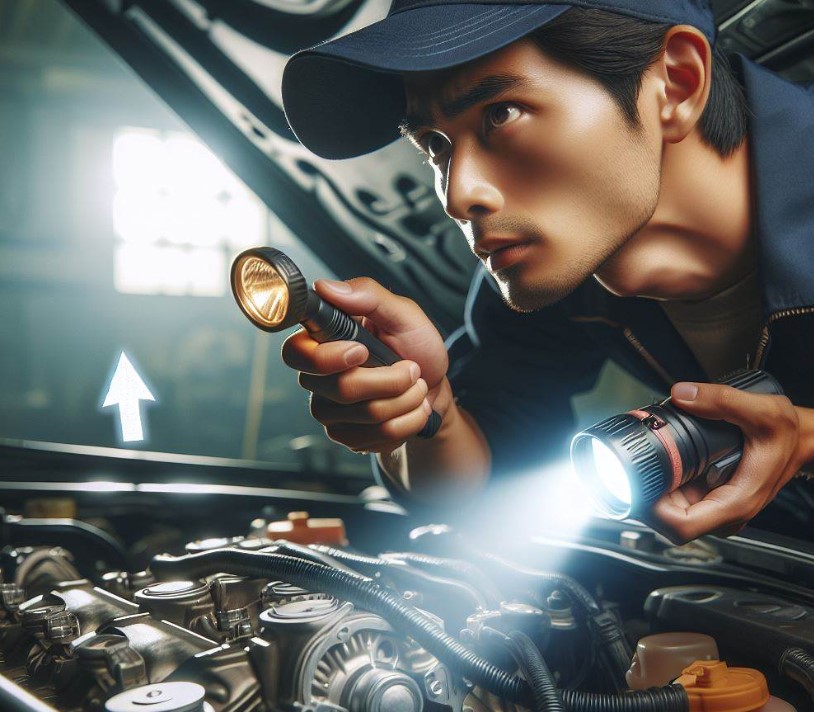
If the shaft rotates to the right (like the motion of a clock’s hands), the motor is considered to be rotating clockwise. Conversely, if it rotates to the left, it is counterclockwise.
For electric motors, another method involves checking the wiring and phase sequence, which dictates the rotation direction. Manufacturers often indicate the rotation direction on the motor’s nameplate.
In scenarios where the motor is part of a larger assembly, such as in an appliance, referring to the equipment’s service manual can provide the necessary information.
For precision applications, tools like tachometers can be used to accurately determine the rotation direction, especially when visual inspection is challenging.
Which Way Do You Rotate An Engine?
The rotation direction of an engine is typically determined when viewed from the front, where the pulleys and belts are located.
For most automotive engines, especially those found in cars manufactured in North America and Europe, the standard rotation direction is clockwise. However, this can vary based on the design and purpose of the engine.
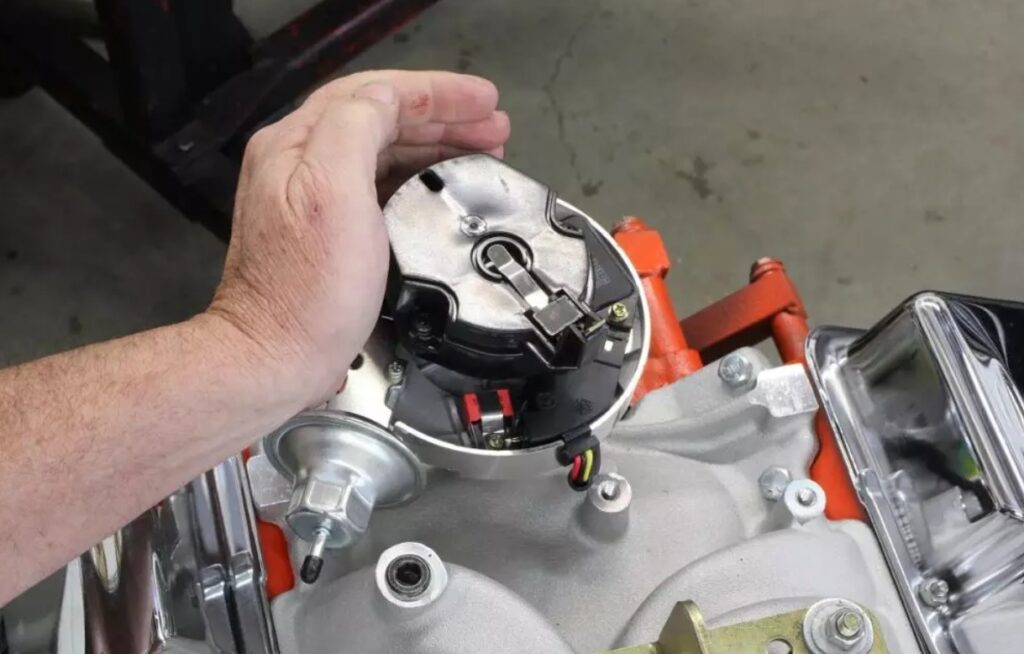
In certain applications, like marine or specialty vehicles, engines may be designed to rotate counterclockwise to meet specific operational requirements.
It’s essential to consult the manufacturer’s manual or technical documentation for the specific engine in question to ascertain the correct rotation direction.
This information is critical when performing maintenance tasks such as timing belt replacement or engine rebuilding.
For practical verification, mechanics often manually rotate the engine using a wrench on the crankshaft pulley, observing the direction in which the components move.
How Do You Determine The Direction Of A Small Engine Rotation?
Determining the rotation direction of a small engine, such as those used in lawnmowers or generators, involves a few straightforward steps.
Firstly, locate the crankshaft, which is usually accessible and visibly connected to the blade or the generator. Observing the crankshaft’s movement during startup will reveal the rotation direction.
Another method is to examine the orientation of the starter mechanism. In pull-start engines, the direction in which the cord is pulled and the subsequent rotation of the starter mechanism can indicate the engine’s rotation direction.
For electric start small engines, observing the starter motor’s movement, as it engages with the flywheel, can give a clear indication of the rotation direction. Additionally, small engine repair manuals often specify the rotation direction, making them a reliable source of information.
In cases of uncertainty, especially with modified or older engines, consulting with a small engine mechanic or referring to forums dedicated to the specific engine model can be helpful.
Conclusion
Accurately determining the engine rotation direction is essential for maintaining and repairing engines effectively. By utilizing methods like visual inspection, starter motor observation, understanding engine design, consulting manufacturer documentation, and troubleshooting, one can reliably ascertain the correct rotation direction.
This knowledge not only aids in proper engine installation and maintenance but also enhances the overall performance and longevity of mechanical systems.
People Also Ask
In case of engine modifications, how can I verify the rotation direction?
For modified engines, the best approach is to manually turn the crankshaft using a wrench and observe the direction of rotation. You can also consult the modification documentation or reach out to the individual or company that performed the modifications for clarification.
Are there any visual markers on the engine to indicate rotation direction?
Some engines have visual indicators like arrows or markings on the crankshaft pulley or near the timing belt cover to show the rotation direction. However, not all engines have these markers, so other methods may be necessary.
How does engine rotation direction impact the configuration of the serpentine belt?
The serpentine belt must be routed according to the engine’s rotation direction to ensure it drives the accessories like the alternator, air conditioning compressor, and water pump correctly. Incorrect routing can lead to poor performance or damage to these components.
Does the rotation direction affect the type of starter motor needed?
Yes, starter motors are designed to turn in a specific direction. Therefore, an engine with a reverse rotation will require a starter motor that rotates in the opposite direction compared to a standard rotation engine.

Matt Rex brings 12 years of specialized automotive expertise, holding a professional degree in Automotive Engineering Technology. As the founder of Turbochaos, he delivers comprehensive diagnostic services, performance optimization, and fleet maintenance solutions, backed by advanced certifications in hybrid/electric systems and ADAS technology. Its innovative methodologies have earned industry recognition while maintaining a 98% customer satisfaction rate.

